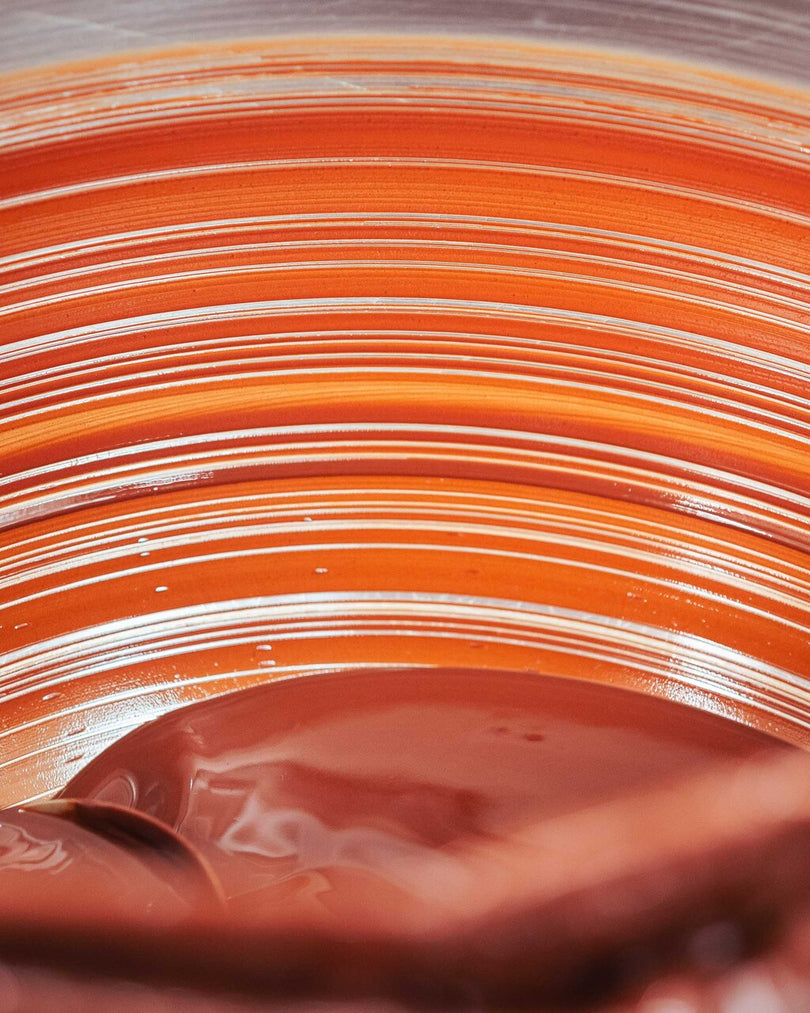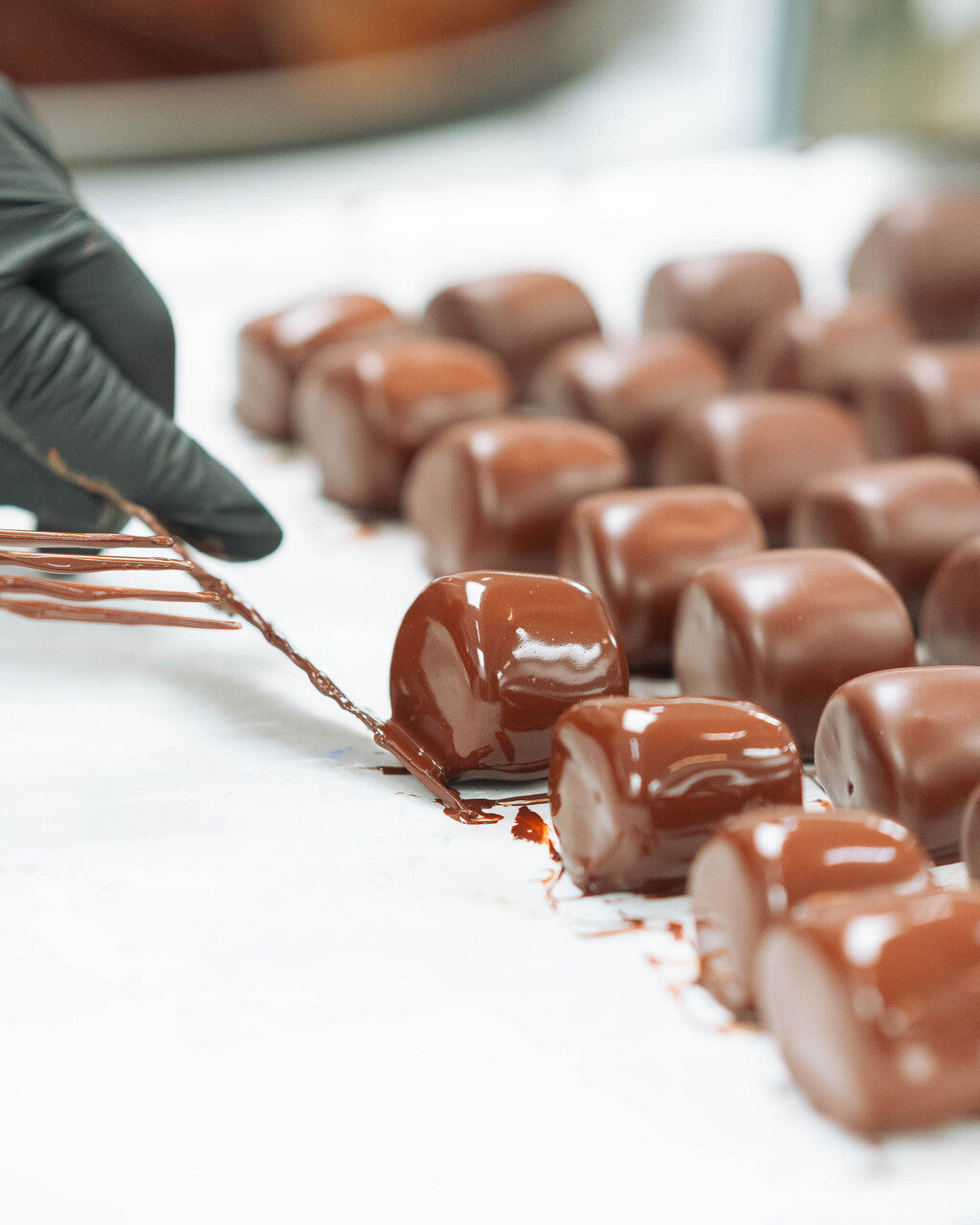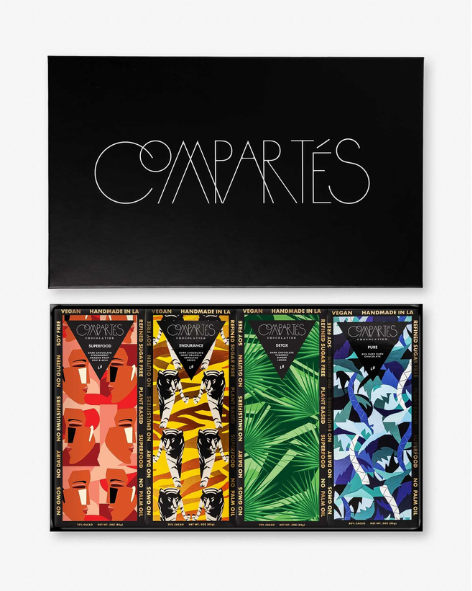The Rising Cost of Cocoa and Tariffs: A Bitter Reality for the U.S. Chocolate Industry
With the U.S. chocolate industry in turmoil, new tariffs have arrived to further disrupt supply chains on top of surging cocoa prices. With growing complexity driving up costs across the board, it’s no surprise that manufacturers and retailers alike are feeling the squeeze. The effects of these economic pressures are occurring across the market, from shifts in consumer purchasing behavior to higher production costs.
What’s Behind the Surge in Cocoa Prices
There are a number of drivers behind the record cocoa prices of the first quarter of 2025, including:
-
Increased global demand driving prices up
-
Supply shortages across West Africa and other key cocoa-producing regions
-
Disruptions in existing supply chains, including rising transportation costs and labor shortages
-
Cocoa tree disease outbreaks, largely driven by adverse weather conditions like excessive rainfall.
While cocoa prices have been volatile over the last few years, the severity of recent increases is unrivaled. Global cocoa prices peaked at a record high of nearly $13,000 per metric ton in December 2024, according to Wells Fargo’s Agri-Food Institute. That occurred on December 18th, but the average cocoa price for the entire month of December remained over $10,000 per metric ton, which was a more than 140% increase over the roughly $4,500 average seen as recently as January 2024. Combined with these high prices was the highest deficit of cocoa supply in 60 years, which reached 478,000 metric tons in 2024.
However, there have been more recent signs in the cocoa market that relief is on the way. As of March 2025, cocoa futures have traded at around $8,100 per metric ton. That’s close to their lowest in the last four months. Weather conditions are improving in West Africa. Long sunny spells and above-average rains are helping crops recover in time for the April-to-September mid-crop assessment. The International Cocoa Organization is also projecting a reverse of the last three consecutive years of deficits, with a hope for a surplus of around 142,000 for the 2024/25 season. Finally, cocoa inventories across U.S. ports have rebounded to a 3-month high, with 91,800 tons reported on March 10, 2025.

Image Courtesy of Business Insider
U.S. chocolate manufacturers are grappling with the price surge driving up costs in raw materials. Many brands are making difficult decisions, such as opting to shrink product sizes (also known as “shrinkflation”). Others are retaining familiar product sizes but raising retail prices to maintain already stretched profit margins. The market size for cocoa beans is forecast to grow by a further $3.58 billion USD between 2024 and 2029. Factors like growing interest in the potential pharmacological use of cocoa, increasing demand for cocoa-enriched and chocolate-flavored beverages, and industry consolidation are all driving this growth. The impact is particularly pronounced for artisanal brands.
Tariffs and Trade Policies
Soaring prices for raw materials like cocoa aren’t the only challenges facing U.S. chocolate manufacturers and brands. They must also navigate new tariffs that add another layer of complexity to today’s tense economic climate. Recent trade policies have led to increased import duties that directly affect the majority of cocoa and chocolate products.
While these tariffs are intended to promote and protect domestic industries, as well as stemming from broader geopolitical tensions, they’re having unintended consequences for many U.S. confectionery companies due to their reliance on imported cocoa. Higher tariffs are often passed down by companies to consumers in the form of higher prices. Yet the industry risks shifting consumer purchasing behavior by raising prices, potentially causing a decline in sales.
Implications for Chocolate Consumers
1. Higher Prices on Chocolate Products Across the Board
It’s likely that consumers will spend between 10% and 20% more for the same chocolate products in 2025 than they did in 2024, according to commodities analyst David Branch at Wells Fargo’s Agri-Food Institute. Wholesale prices surged by 30% from January 2024 to January 2025, so it’s impossible for consumers to go much longer without feeling the effects.
2. Quality Changes in Many Product Lines
Some brands may choose to use less chocolate or replace cocoa content with lower-cost ingredients. This translates to chocolates with a lower quality flavor and texture in most cases.
3. Fewer Sales, Promotions, and Discounts
Sales for holidays are likely to offer less of a discount than before. You’ll also find that promotional offers and bulk discounts become less available due to rising wholesale costs.
4. Shrinkflation
You’re spending the same amount as before, but you’re getting less product in each package. It can help brands avoid noticeable price hikes, such as how a king-size two-pack of Reese’s hearts increased by 13% from February 2024 to February 2025, from $2.29 to $2.59.
5. Less Accessibility of Luxury and High End Chocolates
With production costs rising and quality raw materials becoming harder to source, some luxury chocolate manufacturers may simply produce less product or dramatically increase prices. This can lead to a lack of available high-end chocolates for sale, especially as consumer demand continues to rise. Consumers may be forced to switch to mass-market chocolates or buy them less frequently.
Impact on the Broader Chocolate Market
Some consumers may cut back on discretionary spending due to the pressure from tariffs and other economic policies. This could also drive demand for plant-based confectionery products and alternative chocolate substitutes. It is also likely to increase demand for sustainably sourced cocoa and ethical chocolate production. As the supply chain adjusts, companies may seek alternative cocoa sources or invest in sustainability initiatives to help secure future supplies.
Looking Ahead at Cocoa’s Future
Chocolate brands that want to stay competitive in a changing market are likely to implement innovations in sourcing, new recipes, adjusted marketing strategies to justify higher costs, and increased transparency for consumer trust. For example, top designer chocolate manufactuers have already confirmed that additional price increases will be necessary in 2025 to offset record cocoa prices. They’re likely to increase their marketing efforts over the course of the year to reposition themselves as luxury brands worthy of the higher price.
The cocoa market may be demonstrating a few signs of short-term price relief, but the long-term impact of three years of supply deficit and new tariffs continues to pressure chocolate manufacturers and consumers alike. The industry must adapt to remain sustainable despite these challenges. As cocoa prices and tariffs change the industry, consumers are likely to see changes in product offerings, quality, and pricing.













